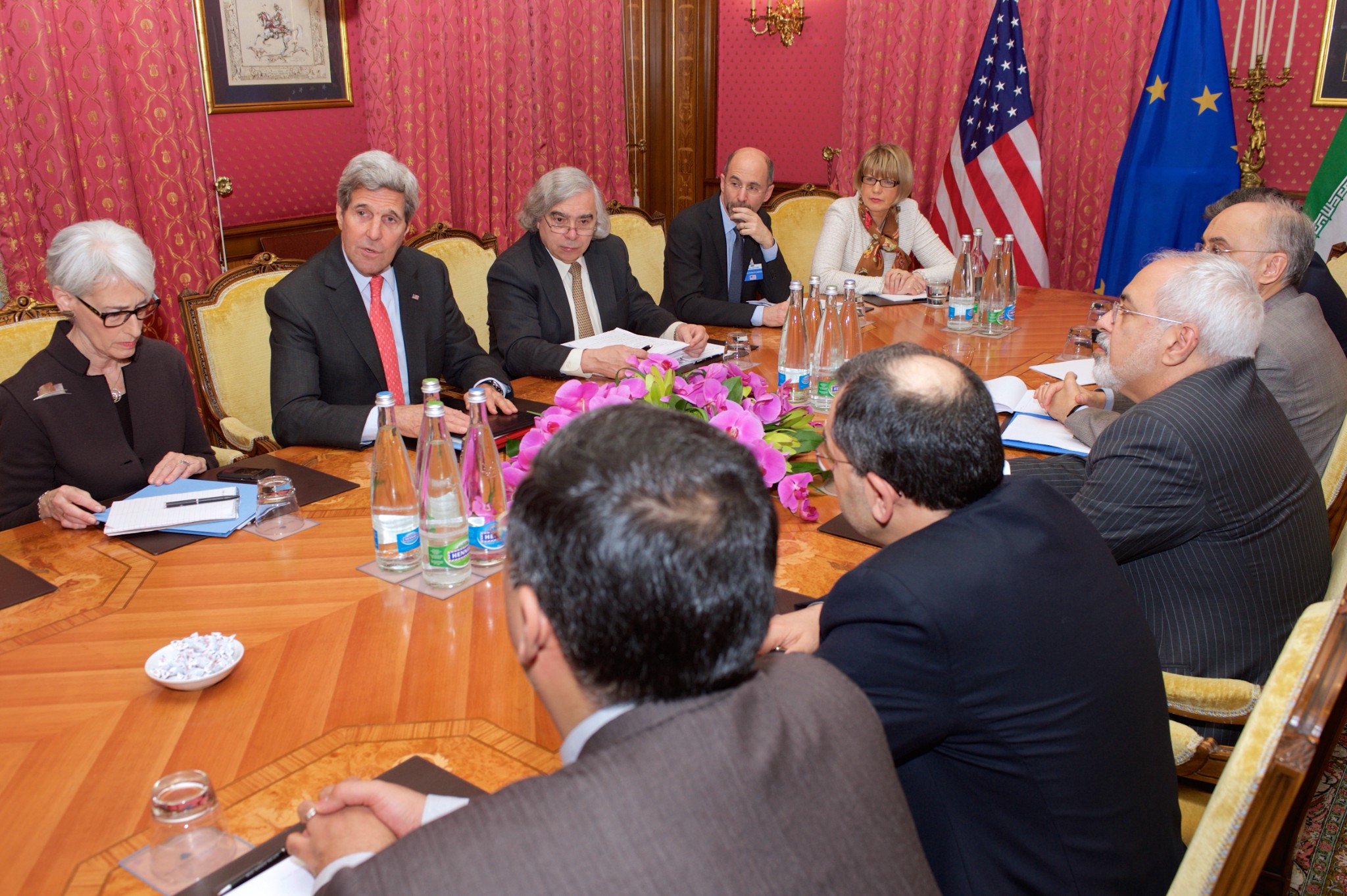 Iran Nuclear Talks in 2015. Credit: State Department Photo
Iran Nuclear Talks in 2015. Credit: State Department Photo
Breaking the Impasse on the Iran Nuclear Deal
Given the current tensions between the U.S. and Iran, the fate of the 2015 Iran deal remains uncertain. Time is running out as Iran continues to expand its nuclear capabilities. The current situation therefore makes the urgency of getting back to a diplomatic agreement clear.
The Iran nuclear deal, the Joint Comprehensive Plan of Action (JCPOA), was signed in July 2015 between Iran, the P5+1, accompanied by the EU. However, in 2018 the Trump administration withdrew from the multilateral agreement and reimposed sanctions on the country that had been lifted under the deal, describing it as one of the “worst” deals ever, as it did not include other aspects such as Iran’s malign behavior and its ballistic missile program.
In response to the United States’ unilateral withdrawal, Iran reduced its cooperation with the IAEA, gradually began violating its obligations in 2019, and resumed some of its nuclear activities, particularly those related to uranium enrichment. A number of other events, such as assassinations targeting Iranian nuclear scientists and sabotage attacks on its facilities, reinforced Tehran’s decision to continue to violate its commitments. The country has now enriched uranium to a purity of almost 60%, well beyond the JCPOA’s limit of 3.67%. Iran is reported likely to have enough nuclear materials for a breakout capability.
Meanwhile, tensions between the U.S. and Iran have increased, with no direct negotiations. Both President Biden and his counterpart Ebrahim Raisi have expressed their willingness to resume talks, without agreeing on the first step. Iran says the U.S. must first lift sanctions that it imposed when it pulled out from the deal. The U.S., on the other hand, says that Iran must first meet its obligations under the agreement, as its violations have far exceeded the terms set out in the deal.
In September, IAEA Director General Grossi visited Tehran and made a new attempt to save the deal, which raised the hope of further talks. However, the joy was short-lived and new disagreements arose. Iran denied inspectors access to the Karaj complex outside Tehran, saying that this facility was targeted by a sabotage attack and was not part of the agreement, because it is still under security and judicial investigations.
Further, on October 2, Iran said the U.S. must first release $10 billion of the country’s frozen funds as a sign of goodwill in order for Iran to return to the negotiating table. Since then, all attempts by the other parties to bring Iran back to the negotiating table have been unsuccessful. Iranian Foreign Minister, Hossein Amirabdollahian, argued that talks on reviving the Iranian nuclear deal would soon resume, however without announcing an exact date.
Iran’s actions indicate that the country is playing for time. Iran does not trust the West and is seeking closer ties with China and Russia. It has signed a 25-year cooperation agreement with China and, on October 6, Foreign Minister Amirabdollahian was in Moscow for talks with his Russian counterpart, Sergei Lavrov, to improve bilateral relations. Feeling more assertive with its SCO membership and the U.S.’ biggest competitors, China and Russia, by its side, the country can negotiate from an enhanced position of strength.
If the talks resume, Iran may want to use the violations of the deal as political leverage to strengthen its position in the negotiations. The country will want to make sure it gets the economic benefits it needs. Further, Iran wants to ensure that a future U.S. administration will not revoke the agreement.
Reverting to the original JCPOA is no longer an option. That’s not to say that some of the key determinations cannot be saved. However, Iran is unlikely to get the deal it originally signed, and Iran’s malign regional activities cannot be incorporated into the deal either. Certain is that a return to a diplomatic agreement is a better option than the other alternatives: doing nothing, going to war, or wasting time by increasing sanctions in the mistaken hope of a significantly better deal. Both the U.S. and Iran need to show their willingness to compromise and make constructive proposals to preclude the possibility of war and the development of a nuclear weapon. Here, direct talks between the parties might be helpful on which Iran needs to agree on. In turn, the U.S. and its allies should work towards a solution to protect a new agreement against future sabotage efforts. Returning to a deal would limit Iran’s nuclear ambitions and protect U.S. interests. Besides, should Iran break the rules set out in the agreement in the future, the U.S. would be in a better position to respond with the support of its allies, which it does not have now due to its withdrawal.





